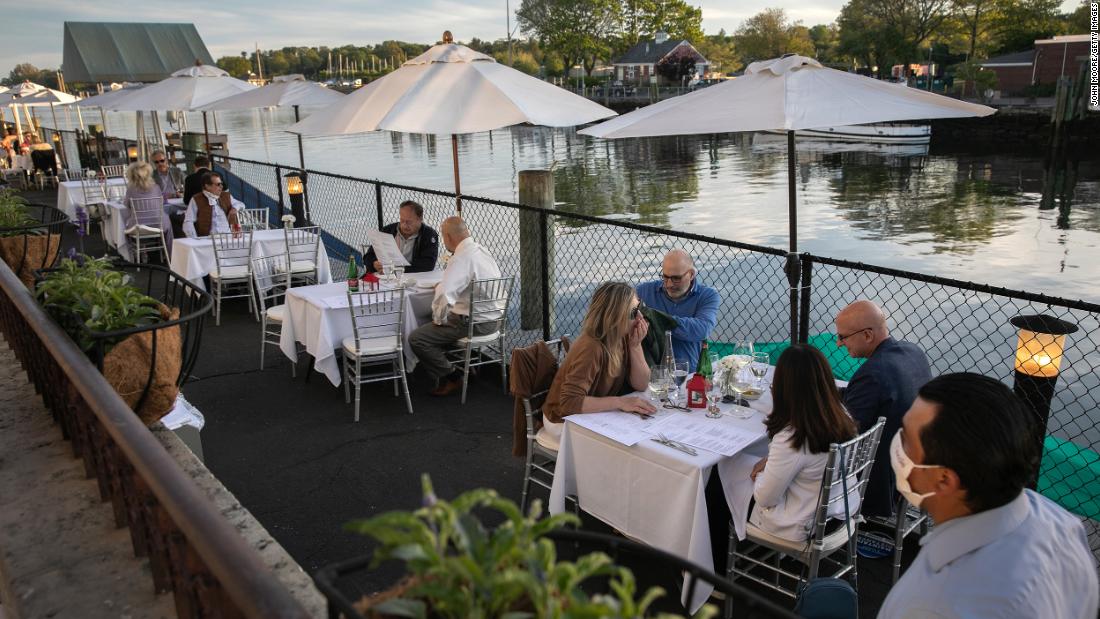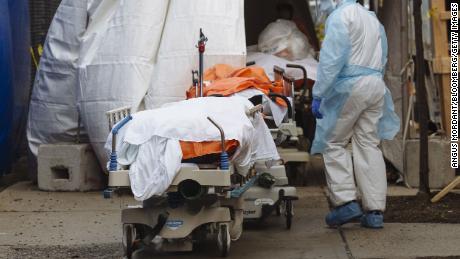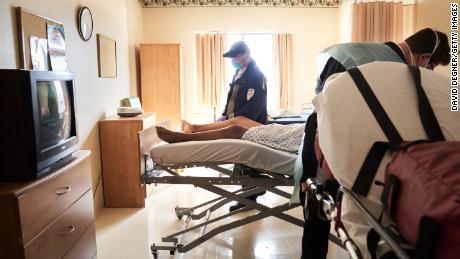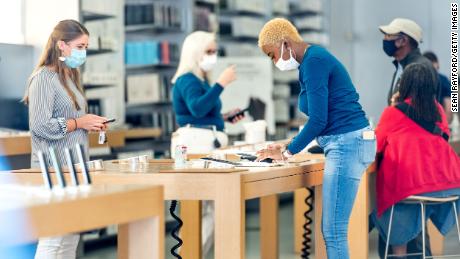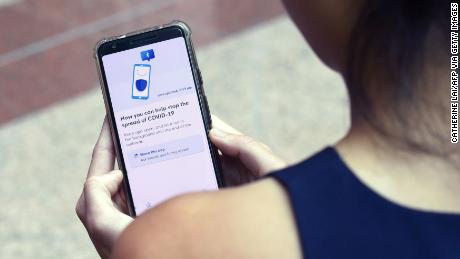Here’s how they’re doing it, and why they can’t let up
That was March. Three months later, the state had “done a full 180, from worst to first,” Gov. Andrew Cuomo said.
Now, the rates of infection, hospitalizations or deaths have plummeted in New York and several other states — paving the way for full economic reopenings.
Here’s how some states have helped get coronavirus under control — and what they’re doing to make sure it stays that way:
Connecticut
How much the state has improved:
Connecticut has consistently had one of the lowest rates of transmission (R numbers) of any state in the country. An R number represents how many people each infected person is likely to go on and infect, on average.
And the number of new deaths has plummeted since April 26, when the seven-day average of daily deaths was 113. That number has stayed below 5 every day since July 2, according to data from Johns Hopkins University.
How they tried to get their numbers down:
Connecticut started mandating face masks statewide on April 20.
How they’re planning to keep a lid on the virus:
Even though Connecticut had some of the best numbers in the nation, Gov. Ned Lamont decided not to move forward with Phase 3 reopening plans on July 6. That meant bars will remain closed, and restaurants must stay at 50% capacity.
“Look, I like a beer at the bar as much as the next person. I know how frustrating this can be,” Lamont said. “But right now, with this pandemic flaring up in a majority of other states, this is not the time to take a risk.”
Lamont also said the state would hold off on allowing outdoor gatherings of more than 100 people.
New York
How much the state improved:
New York started Phase 2 of its reopening on May 29, allowing office-based work, in-store retail shopping and some barbershop services to resume in much of the state.
And between May 29 and July 10, average daily new cases in New York state has dropped about 55% — from about 1,447 new cases a day to 651 cases a day, according to data from Johns Hopkins.
What New York state did:
“If someone is unhappy, if somebody wants to blame someone, or complain about someone, blame me. There is no one else who is responsible for this decision,” Cuomo said that day. “This is not life as usual. And accept it and realize it and deal with it.”
“We’re hunting positives,” Cuomo said in March. “We’re hunting positives so we can isolate them and reduce the spread.”
He credited residents who followed guidance, stayed home, and wore masks when they had to go out in public.
How they’re planning to stay the course:
As a popular tourist destination, New York is trying to prevent visitors from spreading the virus. So anyone coming from a state where coronavirus is surging must quarantine for 14 days upon arrival.
“The quarantine applies to any person arriving from a state with a positive test rate higher than 10 per 100,000 residents over a 7-day rolling average or a state with a 10% or higher positivity rate over a 7-day rolling average,” the governor’s office said.
“Travelers who leave the airport without completing the form will be subject to a $2,000 fine and may be brought to a hearing and ordered to complete mandatory quarantine,” the governor’s office said.
Massachusetts
How much the state improved:
Massachusetts started reopening on May 25. But since then, the rate of new cases has gone down, not up.
Between May 25 and July 10, the rate of daily new cases in Massachusetts has dropped by 75%, according to data from Johns Hopkins University.
How they helped quell coronavirus:
How they’re planning to keep Covid-19 under control:
Massachusetts is doubling down on testing to try to snuff out coronavirus in the state.
This month, Gov. Charlie Baker announced a “Stop the Spread” testing initiative that will last until mid-August.
The effort will focus on eight communities where the rates of Covid-19 are higher than the statewide average.
“The goal of this initiative is to provide widespread asymptomatic testing in an easy-to-access location within these communities” to help stop community spread, Baker said.
For those unable to wear a mask, face shields may be used. And mask breaks should occur throughout the day if there’s adequate distancing or ventilation.
New Jersey
How the state has improved:
How New Jersey helped changed its course:
— The closure of all schools and universities starting on March 18
— The closure of all casinos, racetracks, theaters and gyms
— The closure of all nonessential retail, recreational and entertainment businesses after 8 p.m. each day
New Jersey was the first state to issue a mask mandate, back on April 8.
Businesses must provide masks to employees and deny entry to any customer who refuse to wear them inside the business. Those riding public transit in the state must also wear face masks.
New Jersey also joined forces with New York and Connecticut on requiring visitors from hot-spot states to quarantine for 14 days.
How New Jersey is trying to keep Covid-19 under control:
Officials are urging residents not to get complacent just because the numbers have improved.
“Our rate of transmission is in a good place today, but only a week ago … it was above 1.0,” the governor said Monday.
“And if we change course, it’s going to not only rise, but so will the number of positive test results, so will the number of hospitalizations, and so will the number, sadly, of residents who pass.”
Vermont
How well the state is doing:
How they helped keep their numbers low:
As of last week, “2,469 contacts have been identified,” the Vermont Department of Health said.
“172 contacts became a COVID-19 case. This means that this group of people knew to stay home, and likely did not spread the virus further.”
How they’re planning to keep Covid-19 under control:
And despite having the lowest test positivity rate in the country, Vermont’s state of emergency will be extended for another month, Gov. Phil Scott announced Tuesday.
“It’s the vehicle we need to keep certain protections in place (and) control outbreaks as they come up, so we can keep the economy open and manage this ongoing crisis,” Scott said.
“As long as the data stays consistent, we will stick with our effort to incrementally lift restrictions and get closer to a point where this order is no longer necessary.”
CNN’s Amanda Watts, Eric Levenson, Ganesh Setty, Elizabeth Joseph, Anna Sturla, Ray Sanchez, Alec Snyder, Hollie Silverman and Rebekah Riess contributed to this report.
![]()


